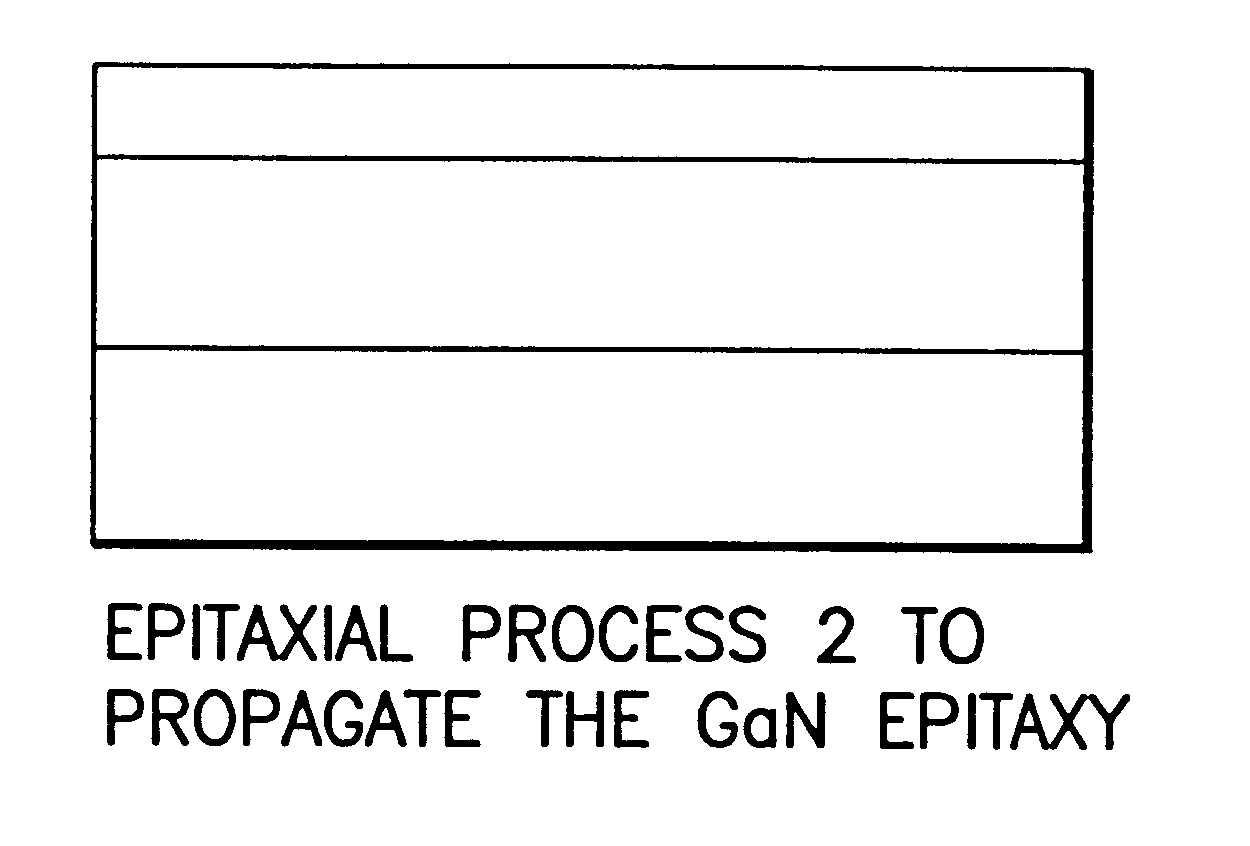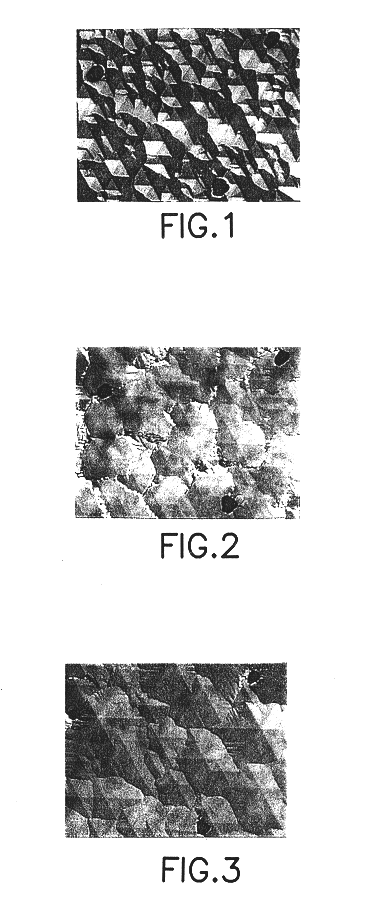Method for achieving improved epitaxy quality (surface texture and defect density) on free-standing (aluminum, indium, gallium) nitride ((al,in,ga)n) substrates for opto-electronic and electronic devices
a technology of gallium nitride and surface texture, applied in the field of improving the epitaxy quality of (al, in, ga) n films, can solve the problems of limiting the quality of the epi and device layer, the coefficient of thermal expansion (cte)-matched, and the inability to match lattice-matched gan substrates of suitable quality and size, and the material is non-uniform in morphology and crystalline quality
- Summary
- Abstract
- Description
- Claims
- Application Information
AI Technical Summary
Problems solved by technology
Method used
Image
Examples
Embodiment Construction
The disclosures of the following United States Patents and United States Patent Applications are hereby incorporated herein by reference in their respective entireties:
U.S. patent application Ser. No. 08 / 188,469 filed Jan. 27, 1994 in the names of Michael A. Tischler, et al., now issued as U.S. Pat. No. 5,679,152;
U.S. patent application Ser. No. 08 / 955,168 filed Oct. 21, 1997 in the names of Michael A. Tischler, et al.;
U.S. patent application Ser. No. 08 / 984,473 filed Dec. 3, 1997 in the names of Robert P. Vaudo, et al.;
U.S. patent application Ser. No. 09 / 179,049 filed Oct. 26, 1998 in the names of Robert P. Vaudo, et al.;
U.S. patent application Ser. No. 09 / 524,062 filed on Mar. 13, 2000 in the names of Robert P. Vaudo, et al.; and
U.S. patent application Ser. No. 09 / 339,510 filed on Jun. 24, 1999 in the names of Barbara A. Landini, et al. for "SILICON CARBIDE EPITAXIAL LAYERS GROWN ON SUBSTRATES OFFCUT TOWARDS ."
As used herein, the term "free-standing" or "FS" in reference to a subs...
PUM
| Property | Measurement | Unit |
|---|---|---|
| temperature | aaaaa | aaaaa |
| temperature | aaaaa | aaaaa |
| temperature | aaaaa | aaaaa |
Abstract
Description
Claims
Application Information
 Login to View More
Login to View More - R&D
- Intellectual Property
- Life Sciences
- Materials
- Tech Scout
- Unparalleled Data Quality
- Higher Quality Content
- 60% Fewer Hallucinations
Browse by: Latest US Patents, China's latest patents, Technical Efficacy Thesaurus, Application Domain, Technology Topic, Popular Technical Reports.
© 2025 PatSnap. All rights reserved.Legal|Privacy policy|Modern Slavery Act Transparency Statement|Sitemap|About US| Contact US: help@patsnap.com



